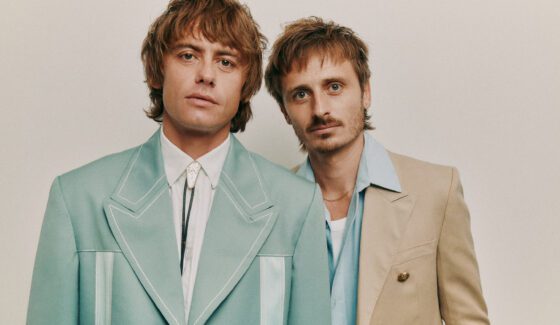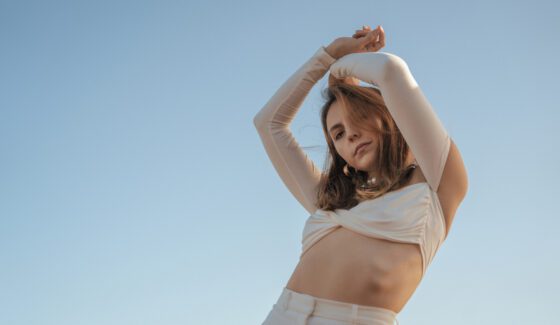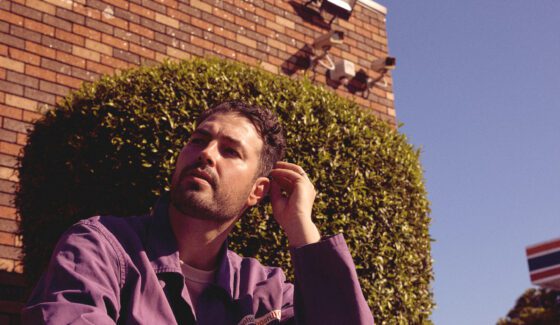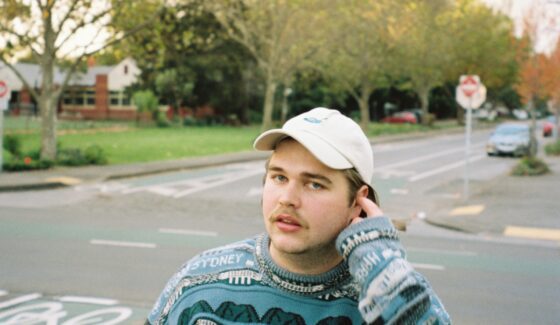Interview: Alice Night
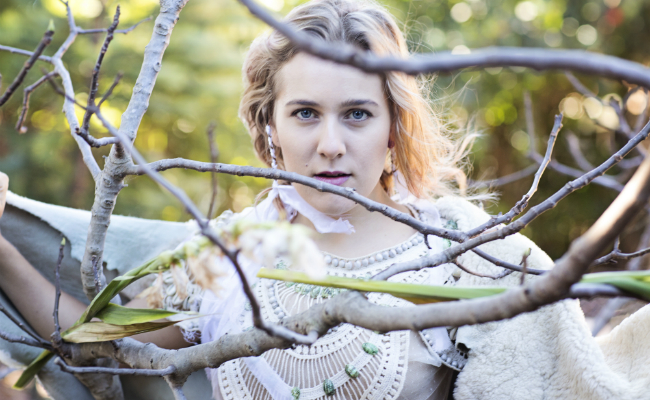
For some, having no fixed address is stressful and just all round not very productive. But Brisbane-born, Brooklyn-based artist Alice Night has just released her debut album ‘Culture How Could You?’, the end result of her “inspiring” visit to New York that provided the passion and content for amazing collection of “honest as f*ck folk” songs. We asked the quirky songstress about her creative processes and how her acting studies at NIDA add another dimension to her music and live shows.
For the uninitiated, how would you describe Alice Night’s sound and live performances?
Ooohh let’s see, it’s hard to describe what I do as an Australian with all the cultural modesty we prescribe to…”it’s alright”…”pretty good”…really though, I’d say its beauty, honesty, authenticity, a haunting tone, connecting, charged and powerful. It’s folky but willing to shift out of paradigms and become a new thing in the moment.
My live performances often feature another artistic, theatrical, or performance element, but the emphasis is always on the lyrics. Also I have a secret love of grunge, whenever I get called grunge folk I am very happy. I’m also influenced by greats such as Portishead and Radiohead. One day I’d be keen to have a band like Fever Ray though, so overall I’d say prepare for the shows and sound to shift over time and space, but you will always get the voice as the consistent element.
You’ve been producing music between Brisbane and Brooklyn, how has New York impacted your songwriting and recording processes?
Brooklyn was a place to go to be inspired and to write music, I think it is interesting the way different spaces impact your writing and creating. The song Lilly Piper Faye for example is a description of a conversation with a young woman in New York after having seen the same incredible show together. It had moved us both, and our interaction moved me to write that song.
While over there I saw Damien Rice and Tina Dico live, they were highlights and inspirations. As for recording, this last album has taught me so much about the process. ‘Culture How Could You?’ is very experimental in that sense, it’s more like a journey that has been sonically documented.
How has the process for ‘Culture How Could You’ been different to your previous releases?
This process took a lot of time, it was a meandering path across countries and collaborations. My EP ‘Like Red and Yellow Leaves’ was a much faster process working in one space in Brisbane. ‘Culture How Could You?’ was born out of adventures, conversations, even verbatim songwriting, jams, and pressing record in at least 10 different spaces in nature and the city to work with all of the different artists on the album.
For the album you worked with Robert Davidson of Brisbane’s Topology, how did Davidson’s experience with diverse musical styles impact your finished product?
Robert is an incredibly generous person and artist, the piano that features on the album is all Rob. Some of my ultimate favourite moments on the album are when Rob just moves from one groove to another and all of a sudden we are floating on a sea of piano notes and bowed double bass with five different layers. Working with him was wild, I don’t read music, while he has ideas that are so complex that he has to notate them first and then learn to play them later.
Overall I’d say working with Rob made me feel like anything was possible, we didn’t try to stick to a sound that is popular we just explored, in that way I see this as an art/music album, even though there are still verses and choruses and the occasional bridge.
Your lyricism is very descriptive and visceral, what inspires your writing?
My writing comes from deep places, difficult experiences, sublime interactions with people or nature, questions, curiosities, hopes, and pains. It’s a spectrum! I see art making as kind of like gift giving, so I make a gift for whoever wants to receive it, I wrap it up, and for as long as the world has CDs and record players and the internet human beings around the world can have these songs in their lives.
That’s why I write, to give. My underlying philosophy though is that what is happening in the world right now is highly problematic and we need to make some major changes and fast. I think that healthy and happy people make better decisions and care for each other better and that art can be a healing force in the world and open our minds and hearts to new possibilities.
You say you work with dancers and visual artists to bring your recordings to life in a live setting, are your songs created with the visual element in mind?
For whatever reason my brain often works in quite poetic ways. I don’t necessarily see a visual element, and actually when creating film clips I often draw blanks on how to compliment the songs visually, but when I tune into the lyrics they are of course full of images, places, people, interactions, and memories.
In a live sense I’m interested in visceral performance spaces, I want the audience to experience surprise, anticipation, intimacy and performance art, dance, and theatre are big players in those ways. They are forms that excite me, and I think to be an art maker you need to be thrilled by what you are doing on stage, sometimes even afraid.
The music video for Curious Child shows us a just that, a young girl who is making her way through the woods learning as she goes, what’s the story behind both the song and the music video?
This song is reflecting on childhood, who we were when we were little and who we become. I think that the natural curiosity of children is one of humanity’s most beautiful traits, but sadly it can be one that we lose. The imagination, freedom, and empathy are so intact when we are toddlers.
This song is about remembering joy and exploration and the performers in the clip embody this in a way that inspires me to a new level also. I think that an adult who can play is a healthy person. Put the to-do list down, stop trying to justify your existence to yourself (you don’t need to), and just be free and present and willing to live and dream! That’s also advice to myself…
How does your acting and study at NIDA factor into your songwriting and your live performances?
At NIDA I’m studying writing for performance focusing on writing plays and film scripts. We study a lot of philosophy, which is great as far as getting out of my own story and perspectives and opening to new ideas. That’s actually a big part of why I wanted to do this course, to learn about the world through theatre and film, it turns out though that our work is often very personal and I am naturally making many discoveries about myself also.
It’s a big vision for me to create spaces where live music and theatre combine with complex and radical narratives and musical elements that express what cannot be expressed in any other way. Songwriting is storytelling. Some stories need three verses, some stories can be painted, others need 100,000 words, and others need a cast of 20 who are all in chorus together. I’m up for all of the above and more!


